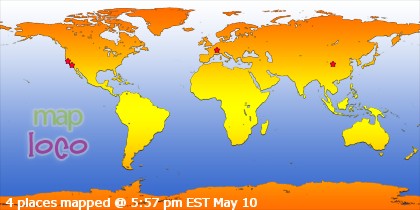
Equine Clinic:
Trailers to be used to transport horses:
(GUANGZHOU, January 3,2008) -- The Hong Kong Olympic Equestrian Venue has placed environmental protection and conservation on the top of its priority list in preparations for the Olympics. Whatever can be recycled and reused, is, including horse waste.
Leftover food and horse waste are moved daily through special channels to be turned into fertilizer at a special treatment plant, showcasing the facility's dedication to environmental preservation.
The main venue, located in Sha Tin, Hong Kong, is a 278,000 square meter all-weather sand arena. The Hong Kong Sports Institute and the Penfold Park have been remodeled and renovated to create the Olympic facility. The complex incorporates a main arena, a warm-up area, training areas, a equine clinic, a café, 1200 m of bridle track, turf gallop track, and stables for over 200 horses.
The Hong Kong Equestrian Center is the first and only equestrian venue to enable an air conditioning system in its practice quarters.
In August, 2008, equestrian events for the Olympic Games will be held in Hong Kong. By May of 2008, the Hong Kong Equestrian Venue's construction for Olympic events will have been completely finished.
With 18000 seats available for fans, the Hong Kong Equestrian Center will showcase its high-tech settings for all to enjoy.
At the Hong Kong Olympic Equestrian Venue:
Horse Track: a Layer of Sand, a Layer of Gold
The horse racing track has been paved with an elaborate mixture of 6 different materials, making for a soft, comfortable, yet competitive running environment for racing horses.
Hong Kong Jockey Club representative Liu Shiwen reported that the "sandy soil" is composed of fine sand, soil, sawdust, and cloth, and was created according to Olympic and international standards. After a thorough investigation regarding its benefits, this "sandy soil" has been qualified as different from the sand that makes up other horse racing tracks, as the unique mixture adjusts to horses' running needs.
Liu also stated that this "sandy soil" has mostly been especially imported from Europe, following strict environmental protection standards. The special mixture has water repelling abilities; in case of stormy weather, planners guarantee that within an hour after rain has stopped, racing can begin again. Although more expensive than traditional sand, the "sandy soil" is worth the cost, and is worthy its nickname: "golden soil."
Practice Track: Air conditioning for horses
In August, will Hong Kong's sweltering heat affect the prize-winning horses? Liu assures fans that this is not something to worry about, because the well-established Hong Kong Jockey Club has fitted the practice track with the world's first and only air conditioning system to be installed in a horse training arena. With over 200 air conditioning units available to cool off the world's best race horses, and an area for them to take showers after their runs, the horses and their trainers have little to be concerned over.
Although the race horses can rest comfortably in air conditioned rooms before competitions and during practice, during the races themselves, horses must run in the fresh air. Thus, dressage competitions are set up to commence at night and eventing competitions are scheduled to be held at 8 am so as to avoid horses being too chilly in the early morning hours and too hot later on during the day.
Planners of the competition will be observing weather conditions carefully during the Olympics. If they find that the heat is affecting the horses' performances, events will be rescheduled accordingly.
Conservation: Waste nothing
The most often heard word around the Olympic racing facility is "recycle." According to Miss Liang, a representative of the racing association, conservation and environmental protection are top priorities in the facility. Horse stables, air conditioning systems, air flow systems, and light requirements have all taken into account energy conservation. Materials that can be reused or recycled are treated with great management techniques to ensure that nothing is wasted.
Even horse waste and leftover food will be transported daily to a waste management center, where, after proper treatment, they are transformed into useful fertilizer for trees and flowers. This showcases the high responsibility felt by planners of the facility to emphasize a "green Olympics."
Tuesday, July 29, 2008
Nothing is wasted at Hong Kong Olympic Equestrian Venue..
Labels: .circus.
Subscribe to:
Post Comments (Atom)















0 comments:
Post a Comment